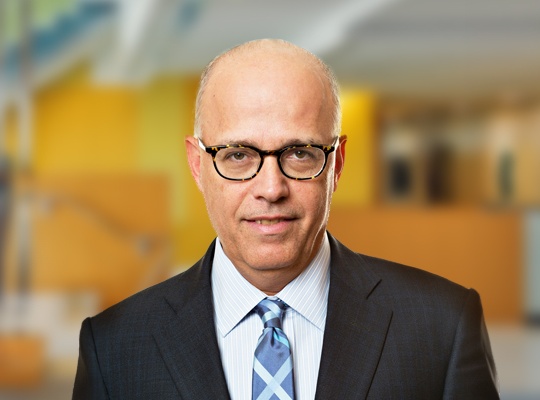Maybe You are Entitled to a Cure Payment, or Maybe Not?
The Second Circuit recently held that a non-party to an assumed executory contract is not entitled to a cure payment (although it may be so entitled if is a third-party beneficiary of the contract). The result would have seemed obvious to bankruptcy practitioners. So, what in the world made the party pursuing payment to take this to the Second Circuit? Well, surprisingly, as the Second Circuit decision shows, the answer is not found in the plain text of the Bankruptcy Code. And while it was argued prior to the Supreme Court’s ruling in Bartenwerfer v. Buckley, No. 21-908, 598 U.S. ___ (2023), that a debtor cannot discharge debts incurred through fraud, even when the debtor was not the individual that committed the fraud, Buckley would appear to support the non-party’s position seeking cure payment.
Facts
George Washington Bridge Bus Station Development Venture LLC (the “Debtor”) was a party to a development contract and a ground lease (the “Lease”) for the Port Authority bus station with the Port Authority of New York and New Jersey (the “Owner”). The Lease provided that the Debtor may hire contractors subject to Owner’s approval, that the Owner shall have no liability to such contractors and that the Debtor shall pay such claims when due (the “Payment Provision”).
The Debtor hired Tutor Perini Building Corp. (“Tutor Perini”) as the general contractor for the development project . Various disputes ensued among the Owner and Tutor Perini but eventually the Owner filed for chapter 11 intending to sell (through an assumption and assignment) its rights under the Lease. The Owner asserted a cure claim which the Debtor and the Owner settled. Tutor Perini, however, asserted its own cure claim for amounts not paid under the construction contract, relying on the Payment Provision of the Lease. The bankruptcy court rejected Tutor Perini’s cure claim and the district court affirmed.
The Second Circuit Decision
Non-Party Cure Claims
The crux of Tutor Perini’s argument was that section 365 of the Bankruptcy Code, requiring defaults to be cured as a condition to an assumption and assignment of leases and executory contracts, “does not limit who may assert a cure claim,” and the Lease, to which it was not a party, required the Debtor to pay the contractors. The Second Circuit rejected that argument holding that in order to assert a cure claim, a creditor must have a right to pursue a breach of contract claim under the contract to be assumed. How did the Second Circuit reason its holding?
First, the Second Court relied on a public policy limiting the availability of priority claims in order to ensure equality of distribution. Therefore, since cure claims are considered administrative expense claims, the Court did not see how granting Tutor Perini an administrative expense claim advances the statutory purpose of the Bankruptcy Code, i.e. making sure that a party that must continue performance is being paid.
Second, reading section 365 as limiting cure claims only to those with claims under the contract to be assumed, makes the most sense as the Bankruptcy Code should be read as a whole. Thus, section 365 is designed to address claims of parties to a contract that is to be assumed or rejected, not to modify distribution priorities for other parties.
Finally, the Court notes that Tutor Perini has its own (construction) contract with the Debtor. Rejection of that contract would give Tutor Perini an unsecured claim for rejection damages; giving it a hook to assert administrative claims in the guise of a cure claim under the Lease seems to make little sense – “[i]t is difficult to believe that this is what Congress intended.”
This is where juxtaposition with the Supreme Court Buckley’s decision makes it interesting. There, at issue was an interpretation of section 523(a)(2)(A) of the Bankruptcy Code, which excepts from an individual debtor’s discharge “any debt . . . to the extent obtained by false pretenses, a false representation or actual fraud.” The debtor herself committed no fraud; her boyfriend/business partner (and later spouse), did. Relying on the literal wording of section 523(a)(2) the Court held the debt non-dischargeable as to the debtor because it was obtained by fraud; who committed the fraud was irrelevant.
The Second Circuit opinion appears to be inconsistent with the statutory construction used in Buckley. Buckley says that a debtor is not discharged for a debt for fraud committed by others, because the statute does not require the debtor herself to commit the fraud; but in George Washington the Second Circuit says that a creditor may not assert a cure claim even though the statute does not limit who may bring such claims. So, does the text of the statute control or not?
Third-Party Beneficiries’ Cure Claims
The Second Circuit rejected Tutor Perini’s claim that it is a third-party beneficiary of the Lease under New York law, which is beyond the scope of this OnPoint. But, in a footnote, the Second Circuit opined that there are sound reasons to believe that Congress intended to allow third-party beneficiaries to assert cure claims. That is because the third-party beneficiary is the one with a right to enjoy the fruits of the contract and enforce its terms. Here as well, the Second Circuit relies on public policy and Congressional intent, not on the plain text of the Bankruptcy Code.
Conclusion
Quite honestly, the argument advanced by Tutor Perini would have felt almost frivolous prior to Buckley. But Buckley may have opened the door for arguments of the type made by Tutor Perini. If the Bankruptcy Code does not specifically limit ones’ rights and claims, maybe they are not. Counsel may find it more difficult to advise clients seeking to pursue claims that, prior to Buckley, were an obvious non-starter.
The Second Circuit opinion is available here.


